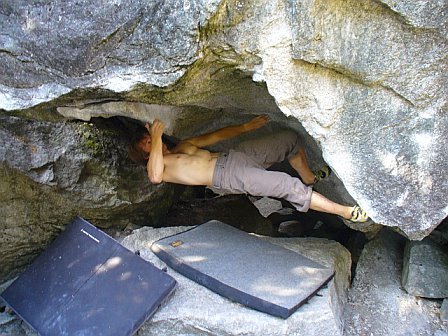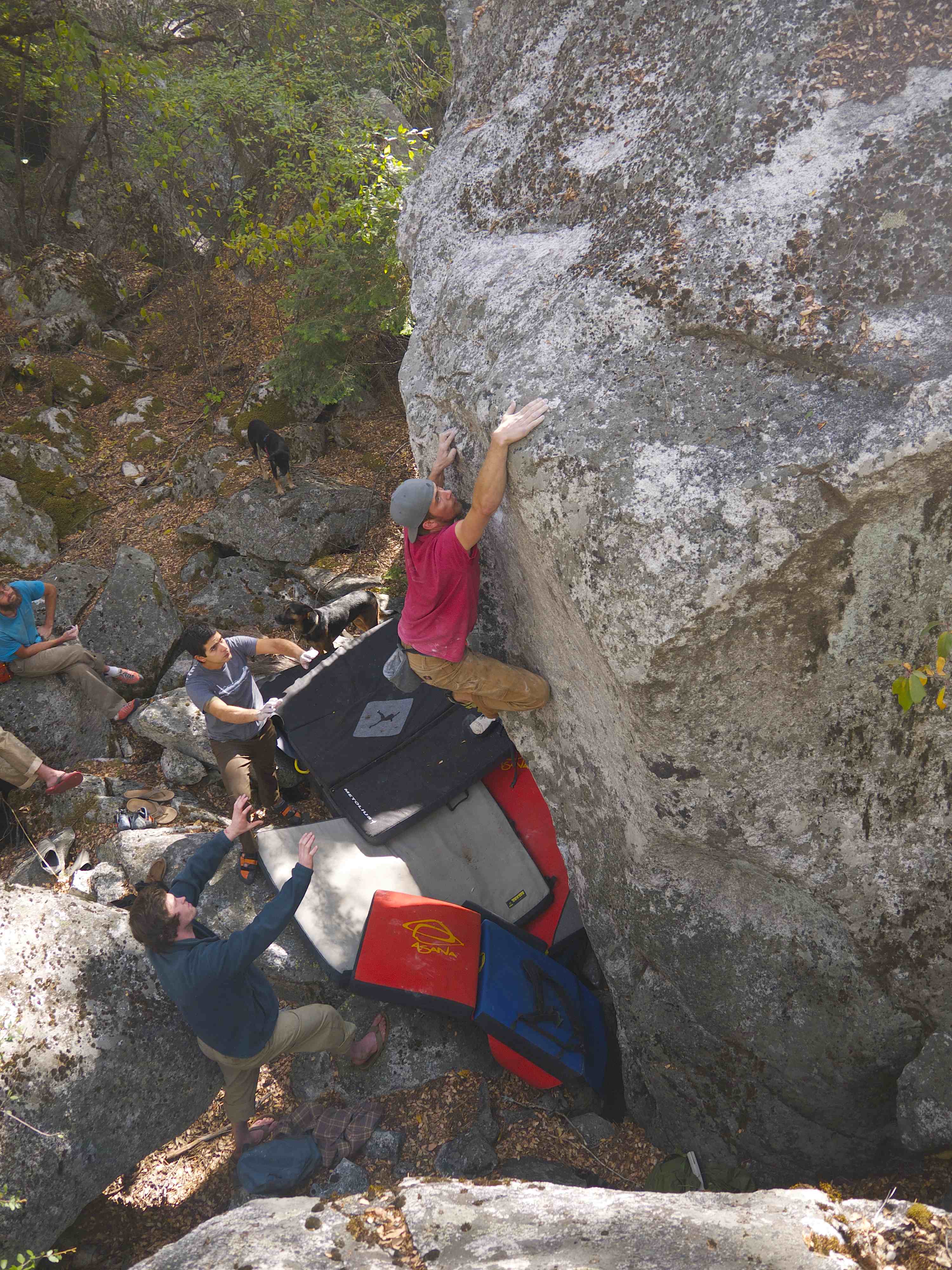Every year I stare at the enormous formations of Yosemite Valley. They tower above me. I know that I want to climb them. I also know to do so I need to become a much better rock climber.

Bouldering on Tatonka in Squamish
Bouldering provides one of the fastest ways to improve technique in climbing. This summer I plan on bouldering in Squamish British Columbia in preparation for the fall Yosemite season. Attacking the boulders haphazardly and receiving enormous gains in my climbing would be awesome but is also unrealistic. The best way to steadily improve at climbing is to build a pyramid. The idea of creating a route or boulder problem pyramid has been around for two decades. In 1993 Dale Goddard and Udo Neumann wrote about using a route pyramid to structure progression through the grades in Performance Rock Climbing, “Experience shows that improvement progresses best when the difficulty of routes you have done forms a stable pyramid”.
My goal while climbing in Squamish is to send a V7. To make a bouldering pyramid involves knowing first what you want to accomplish. I’ll be in Squamish for five weeks. The weather may be funky and I might end up climbing routes some days so I decided to make the top of my bouldering pyramid be a V7. My bouldering pyramid would look something like this:
V7
V6 V6
V5 V5 V5 V5
V4 V4 V4 V4 V4 V4
V3 V3 V3 V3 V3 V3 V3 V3

Climbing on Drone Militia in Bishop
The problems fall into three different categories: Projects, Volume problems and Warm-ups. My projects would be the first and second levels of the pyramid, the V7s and V6s. My Volume problems would be the second levels of the pyramid, the V5s and V4s. My Warm-ups would be the bottom of the pyramid, the V3s.
A few days ago I met with Steve Maisch, a climber with 23 years experience and a long time working as a climbing trainer. Maisch provided me with a bit of insight into bouldering specific pyramids. “On a bouldering trip it is usually necessary to take more rest days for skin and general strength reasons. A three day a week bouldering schedule is probably more effective. Also because doing a boulder problem takes less time more problems can be done and attempted in a day. More rest days and the ability to do more problems in a given day allows for the boulderer to project and do volume on the same day.”
Maisch suggested Day 1 I work on Hard bouldering. I warm-up by doing a few easy Warm-up problems and then a warm up problem. Then I try a top of my pyramid project. “Once you start to power down on the project stop trying and go back to camp,” said Maisch who said that it only causes worn skin.

Colton climbing in Yosemite at Happy Isles
I take a rest day and let my skin regrow.
Day 2, I warm up and try my second tier projects, my v6s. If I finish them, then I continue onto my volume climbing and building out my pyramid.
I take a rest day.
Day 3, I warm up and then try my top tier project. Even if I don’t finish it, I try my second tier projects.
I then take two days of rest and repeat the cycle.
I have utilized a pyramid style climbing structure on a number of climbing trips. I saw great results in Hueco, in Ten Sleep and in Rifle. I may go to Squamish and find out that my goals are over ambitious so I will bump my pyramid down a letter. Or I may find that I easily dispatch my pyramid so I can bump my pyramid up a little. Either way, I’ll be building a solid base to becoming a better climber. While I have less outstanding climbing days, I do manage to perform on a consistently improving basis.
For more information check out Maisch’s training page.

